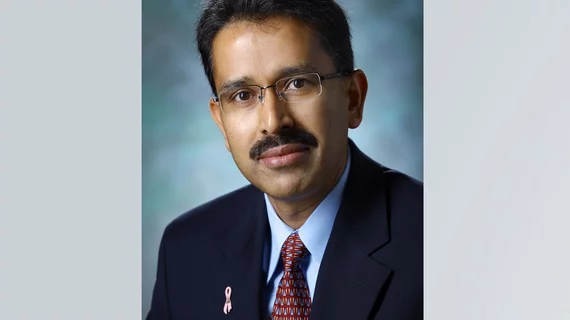Q&A: Why the public should not worry about radiation contamination when bodies are cremated
When JAMA published a research letter detailing radiation contamination in a crematorium, it gained considerable attention from both the mainstream media and the general public. Hoping to ease potential concerns before things grew out of hand, the American Association of Physicists in Medicine (AAPM) and American College of Radiology (ACR) published a joint statement emphasizing that the use of radiopharmaceuticals in healthcare is routine and has been proven to be safe.
Mahadevappa Mahesh, MS, PhD, chief physicist for Johns Hopkins Hospital in Baltimore, Maryland, spoke with Radiology Business to provide additional information about this subject. Mahesh is a representative of both organizations behind the joint statement, serving as treasurer of the AAPM and chair of the ACR Commission on Medical Physics. He is also the president of the Maryland Radiological Society.
The full conversation can be read below:
Why did the AAPM and ACR decide to release this statement? What were the organizations’ concerns?
Mahadevappa Mahesh: We were surprised by how many mainstream news outlets covered this news and we were worried about a radiation scare. We wanted to address the issue immediately to tell the public that this was a very unusual case and that more hospitals and clinics already have processes in place to address this. The radiation exposure was very minuscule—less than one millisievert, which should not be a great concern—but we knew seeing headlines about radiation exposure could cause people to panic.
We thought we should provide this statement that, in simple terms, explained that radiopharmaceuticals are common in healthcare and that the amount of radiation dose to the general public is almost too small to even measure. We also wanted to highlight that guidelines from the Centers for Disease Control and Prevention (CDC) and Department of Energy (DOE) already exist and go step by step explaining how to handle bodies containing radioactive material. Even though the documents exist, we thought many people just didn’t know about them. In addition, we wanted to explain that we, the physicists, are aware of this. We wanted to quell any fears.
Do you think any additional guidelines or policies are needed at this time? Why or why not?
No, no additional policies are needed. On the other hand, some states have regulations on how to handle deceased persons with radiation contamination and some do not. Hence, there should be some sort of commonality between the states so that they can inform the general public and help ease patient concerns about radiation.
What should hospitals, morgues, funeral homes and crematoriums be doing, if anything, about potential radiation contamination due to radiopharmaceutical use?
Let’s start with hospitals and morgues. They need to have a radiation safety officer and, preferably, some sort of monitoring device where the bodies are processed. That device can pick up radiation. In this specific case covered in the JAMA article, the patient was treated with a radiopharmaceutical at one hospital, but then later went to a different hospital, where they deceased. The first hospital staff were not aware that the patient died, while the second hospital was not aware that the patient was under treatment with a radioisotope. The patient was transferred to a crematorium and cremated few days later. When the first hospital came to know about this, they informed the crematorium and conducted the measurement to find a small amount of radiation. So that is what happened.
Funeral homes and crematoriums need to know, when they receive a body, if the patient has been exposed to radiation. The CDC and DOE guidelines cover this, as does a guideline from the National Council on Radiation Protection and Measurements, “Management of Radionuclide Therapy Patients.” Also, at crematoriums, the high temperatures can release the radiopharmaceutical into the air. That’s where the employees should be careful.
Family and friends of patients can also help by telling their physicians about prior radiopharmaceutical treatment. Generally, the physicians should already know, but it helps if family and friends also inform physicians.
Is there anything else you’d like to share about this topic?
There is an increasing use of these types of isotopes for treating cancer patients. The FDA has approved five isotopes at this time, but more than 20 are in the pipeline. This is a good thing for patients, but it shows that the use of radiopharmaceuticals will increase and hospitals and clinics should be aware of how to handle these patients. Hospice providers must also be aware.
The full AAPM/ACR statement is available on the AAPM website.

